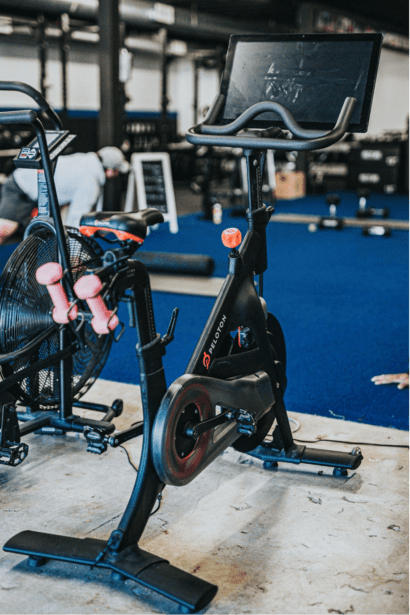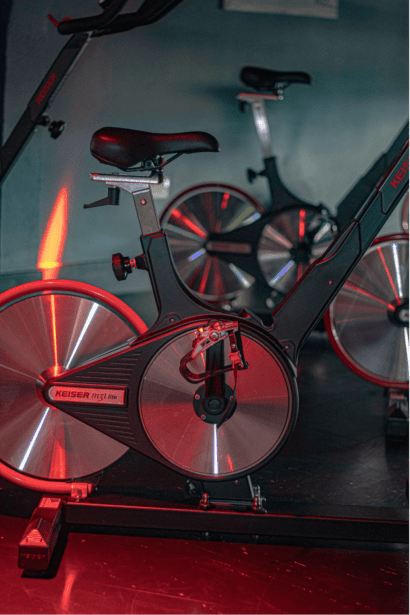Key Takeaway: Conducting an FTP (Functional Threshold Power) test, as offered by Peloton, is a critical way to gauge fitness progress, determine Power Zone levels, and structure future workouts for improved cycling performance and fitness, applicable to both indoor and outdoor cycling.
Introduction
Pelotons are fantastic bikes, and the value they can offer is incredible. They give amazing motivational workouts, and the instructors are just incredible. Many people start their fitness journey on a Peloton bike and get outstanding results.
How do you know you are progressing and getting stronger with all the hard work we give the bike? We test ourselves.
Typically an excellent way of doing this is doing an FTP test, and Peloton offers this as a workout. It’s called Power Zone Training and is a perfect way to gauge your fitness and to make significant training improvements quickly using the results.
What’s an FTP Test?

FTP stands for Functional Threshold Power. This is measured in Watts. Your functional threshold power is the average amount of power you can sustain for 20 minutes minus 5%.
So, for example, if you were to do the test and your average power over the 20 minutes was 200 watts, your FTP would be 190.
200 (Watts) x 0.95 = 190 FTP Score
There are also many other variations of the FTP test, such as an 8 minute average power test where you will minus 10%.
This I have personally found not to be as accurate, and typically the 20 minute test is a better indicator of fitness.
Why do we do an FTP Test?
There are many reasons why we do FTP tests, and in my opinion, if you really want to get something out of your cycling, they give you vital data.
Here are a few reasons you’re going to want to be doing an FTP Test.
To Track Progress
The first is to test how strong we are regularly to track improvements and ensure we are getting fitter and the training we are going through is working. Using this data, we can find our strengths and weakness and how to progress forward.
To find our Power Zone Level
One of the most important reasons we do an FTP test is to help structure our later workouts, which makes Pelotons power zone training so unique. We will talk about the power zone level later in this article in more detail.
To see how we compare to others
If you are in a spinning class, it’s normal to get competitive with others, and secretly we all kind of want to know how strong we are compared to others.
I used to go to classes where we would test our strength, and it felt amazing to challenge myself against others I knew.
To find out our Watt Per Kilo
Watts per kilo is a term used by cyclists that tell you how strong you are for your weight. It’s what many people call pound for pound power on the bike. When you have an FTP score, you can use this calculation to find your watts per kilo.
FTP / Weight in Kilo = Watts Per Kilo
200w / 75kg = 2.66wpk
This is what a lot of cyclists will typically judge their fitness on when it comes to racing, and it gives an excellent indicator of how strong you are on your bike for the weight you are.
What are Power Zone Levels?
As we mentioned before, we do an FTP test to determine our Power Zone Levels. Power Zone levels require an FTP Test to be effective. It means that you can give yourself the correct training load for the session you are doing.
You won’t be working too hard or not enough at any point of the workout. These are the Power Zone Levels that Peloton Provide.
Zone 1 Light – 55% or less of FTP
Zone 2 Moderate – 56% to 75% FTP
Zone 3 Sustainable – 76% to 90% FTP
Zone 4 Challenging – 91% to 105% FTP
Zone 5 Hard – 106% to 120% FTP
Zone 6 Very Hard – 121% to 150% FTP
Zone 7 Max Effort – 151% and above FTP
Using these levels, you are able to get in amazing workouts from intervals to basic endurance sessions, and you know you’re working at the right level whenever you’re doing them because you can gauge the correct amount of power.
Why do we use Power Zones?
We use Power Zones for many reasons, but the most vital is that we can use the correct body’s energy systems by working in the correct zone.
For example, working in a low zone will help train our aerobic engine, and working in a higher zone will help train our anaerobic system. It can be great for hitting specific goals and like building endurance or sprinting power.
Does it have to be on a Peloton?
You can use any indoor or even outdoor bike to do an FTP test provided it has a power function and you have an application to record the results.

Conclusion
When it comes to indoor training, having structure makes such a difference. Using the Peloton FTP Test and Power Zone levels can completely change your training from no effect to a considerable boost in your power.
We highly recommend it and feel it’s a fantastic way to improve your cycling and fitness.

Robbie Ferri has spent years working in a bike shop, has worked with industry leading brands on product creation, has been a semi pro athlete, and is a fully qualified strength and conditioning coach. He has broken World Records, bikepacked all over the World and raced ultra distance at a top-level.


